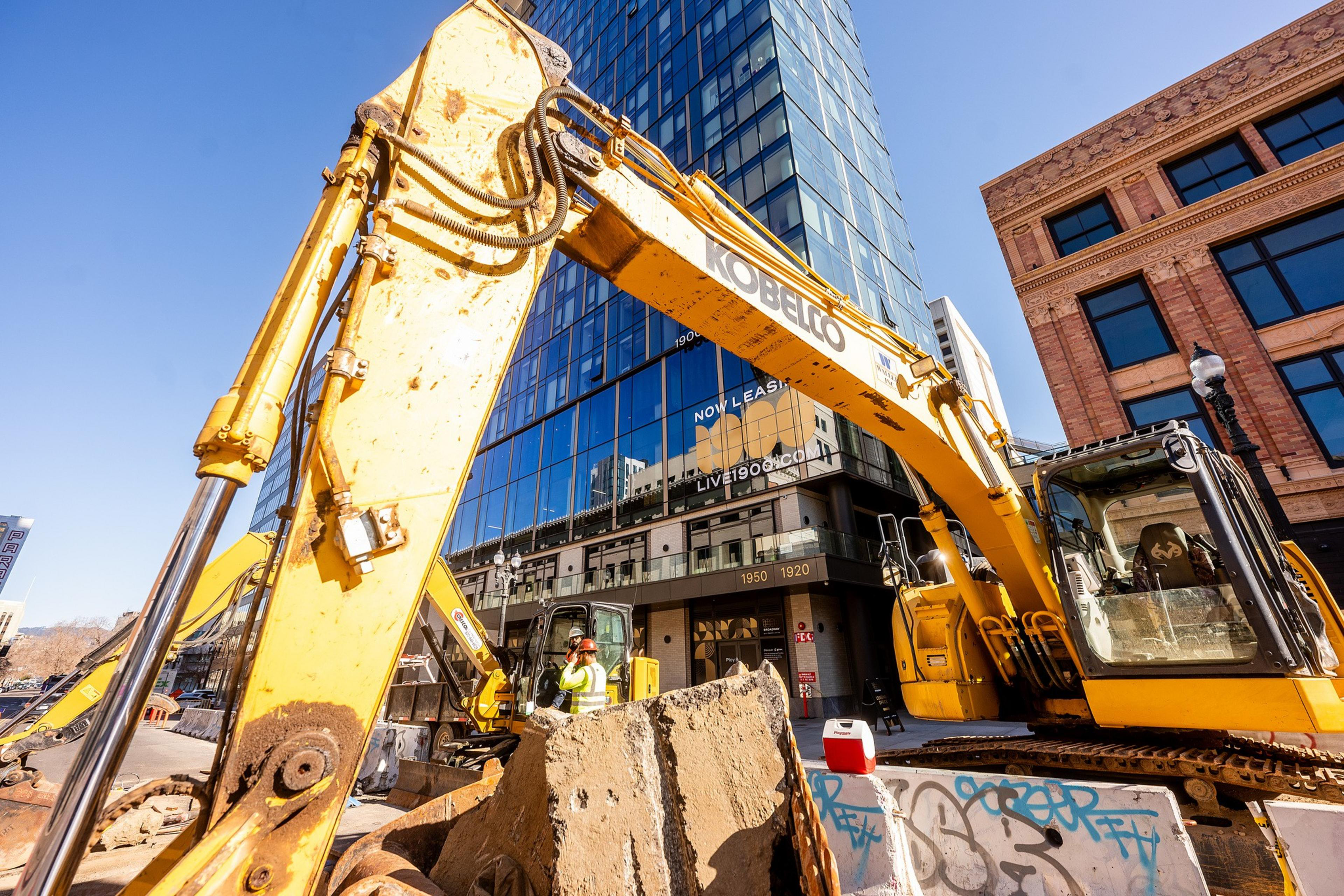Nobody can agree on how to solve San Francisco’s housing crisis, but everybody has an opinion.
In one corner: the YIMBYs. You know about these guys. They’ve spent the last 10 years fighting to make it easier and cheaper for developers of all kinds to build homes. Their philosophy informs the broader “abundance” movement that has taken the country — or at least its wonky podcasts and politicians — by storm.
Their most recent victory? Two new bills rolling back the California Environmental Quality Act for certain housing and infrastructure projects, exempting them from lengthy environmental review processes. Gov. Gavin Newsom touted the change as "the most consequential housing reform that we’ve seen in modern history in the state of California.”
In the other corner: the progressive housing people. These folks are skeptical that the market will provide the type and number of homes the city needs. The YIMBYs have been reforming permitting for 10 years, they say, yet homes still aren’t being built.
Well, that’s because developers can’t find the cash — investing in new housing in San Francisco simply doesn’t make money at the moment. This is mainly due to high interest rates and other factors that state lawmakers and advocates can’t control. But that doesn’t mean they’re sitting idle.
So, in the face of YIMBY victory, here are some housing finance ideas from the other side.

Solution: The city becomes a lender
One idea is to use revolving loan funds. These are exactly what they sound like: funds that pay out loans and are later replenished, enabling more loans to other borrowers. In other words: Cheap money goes out and slowly comes back in.
In this scheme, governments could sell bonds to finance housing, then developers could pay back those loans using rent revenue, and that money could finance more development. Meanwhile, bond investors get a payout.
It’s a strategy increasingly proposed by local and state legislators. East Bay Assemblymember Alex Lee introduced a bill (opens in new tab) this year that could generate close to a billion dollars for social housing. If voters approve it, the money will go into a revolving fund that would issue zero-interest loans (free money!) to developers building low-income housing.
“You have a stable, fiscally responsible tool where we continually replenish the fund, but you also are able to loan out a lot of money to developers,” said Lee, who is one of a dozen California legislators on a new committee (opens in new tab) on housing finance and affordability.
He added that YIMBY reforms could do only so much to address the crisis: “The housing permitting stuff has always been relatively lower-hanging fruit,” he said.
Supporters say it benefits developers, who can borrow money for cheap; taxpayers, who don’t have to shell out extra cash for the program; and the home-wanting public, who get homes.
Revolving loan funds have worked in the suburbs of Montgomery County, Maryland, where the government invests in housing with the goal of lowering rents for mixed-income tenants. The county also works with private developers to rescue stalled market-rate projects — which could be helpful in San Francisco, where more than 70,000 approved units remain unbuilt (opens in new tab) — using the same low-interest loans and property tax exemptions. Rhode Island voters passed (opens in new tab) a similar program last year.
Some critics on the left say the idea is over-romanticized, and the housing it would create would not be affordable enough, but they generally concede that it would be an improvement.
Alex Lantsberg, who sits on the SF Housing Stability Fund Oversight Board and works for a local labor group, wants San Francisco to try it. California legislators have tried to establish revolving loan funds to build housing for students (opens in new tab) and teachers (opens in new tab), so far without success. That wasn’t because the idea is complicated or unfeasible, according to Lantsberg.
“I think it’s doable. It’s a question of will,” he said. “Maybe the No. 1 thing we need is the will to try something new.”

Solution: Make workforce housing tax-exempt
Market-rate housing is too expensive to build. Low-income housing has even more challenges (opens in new tab). But what if there were a secret stash of cash to build a third option just for essential city workers, who are often priced out? Well, there was supposed to be.
Last July, the Board of Supervisors passed Aaron Peskin’s plan to build tax-exempt housing for teachers, firefighters, social workers, and other public servants with Workforce Housing and Affordable Middle Income (opens in new tab) revenue bonds. The strategy is similar to that of Montgomery County.
“I call it the Goldilocks of housing finance,” said developer Eric Tao. Rents in projects like these would be 15% below the market rate.
Mayor London Breed signed the bill in August. The idea was that the city would sell tax-exempt bonds, like the ones it issues to finance sewers and bridges, and use the money to pay developers. The Mayor’s Office of Housing and Community Development would review applications for the bonds and issue them to pay for projects it approves.
But one year on, the city hasn’t issued any of the bonds. It’s not because there are technical challenges, according to architect and housing advocate Fernando Martí, but because Mayor Daniel Lurie doesn’t want to.
“That sort of goes back to Mayor Lurie and [Housing and Community Development director] Dan Adams. We have legislation for you to do this — will you do it?” Martí said. “It’s not a huge lift on their part. The investment is there. The authorizations are there.”
Peskin, a longtime bogeyman of the YIMBYs, said his plan classified workforce housing as a public good that, like infrastructure, should be exempt from property tax. This would allow the rent money to go toward paying down the revenue bonds.
But even though the plan passed, uncertainty remains about whether these projects would actually be exempt from property tax. The city is reluctant to say they would, given that the state has not done the same. But until the city clarifies that WHAMI projects will be exempt from property taxes, Tao said, developers won’t take advantage of the program.
Lurie’s office referred questions to Housing and Community Development. A spokesperson there said the office would review any project sponsor request for the city to issue WHAMI bonds, but it has not received any applications.

Solution: More government cheese
Even with these creative strategies, housing advocates say the long-term solution is more government funding for housing production.
San Francisco voters in 2018 passed Proposition C to fund housing (along with mental health services and other homelessness prevention measures). But Lurie has reallocated that money to fund shelters instead, despite the threat of legal action.
Critics of the mayor say that shifting funds to address the more visible problem of street homelessness fails to solve the root causes, and that sustained government investment in development is essential to solving the housing crisis.
“That requires real public subsidy,” Martí said.
“Public-led housing production” was the first recommendation on a May brief called “Beyond Market Solutions” from the Council of Community Housing Organizations, a coalition of developers and nonprofits. The brief suggests progressive taxation, dedication of public land to mixed-income housing construction, and the establishment of a city social housing developer.
These strategies are being tested in Chicago (opens in new tab), which passed a plan to build middle-income housing on 400 city-owned lots. A pilot program to build on 94 of those lots is underway.
Martí, Lantsberg, and others acknowledge that all of these strategies will take time. The philosophy of the day is “abundance” — cutting red tape and leaning on the market to provide housing — partly because cutting red tape is easier than finding money to build. But some advocates, including Peskin, emphasize that governments need to commit to financing housing if enough housing is ever to be built.
"I mean, there isn’t that much left to streamline, guys,” Peskin said. “You’ve been at it for 10 years. What do you have to show for it?”
